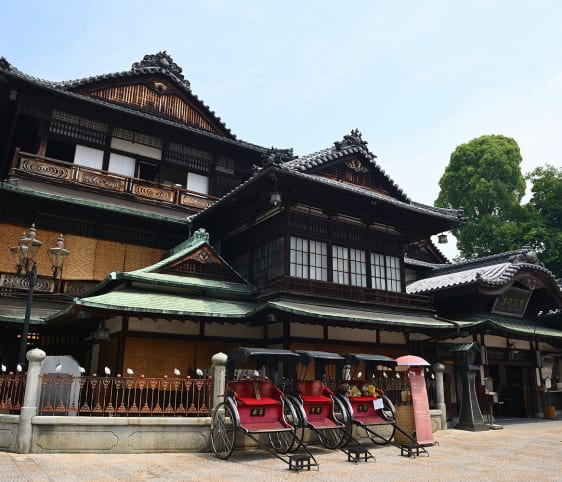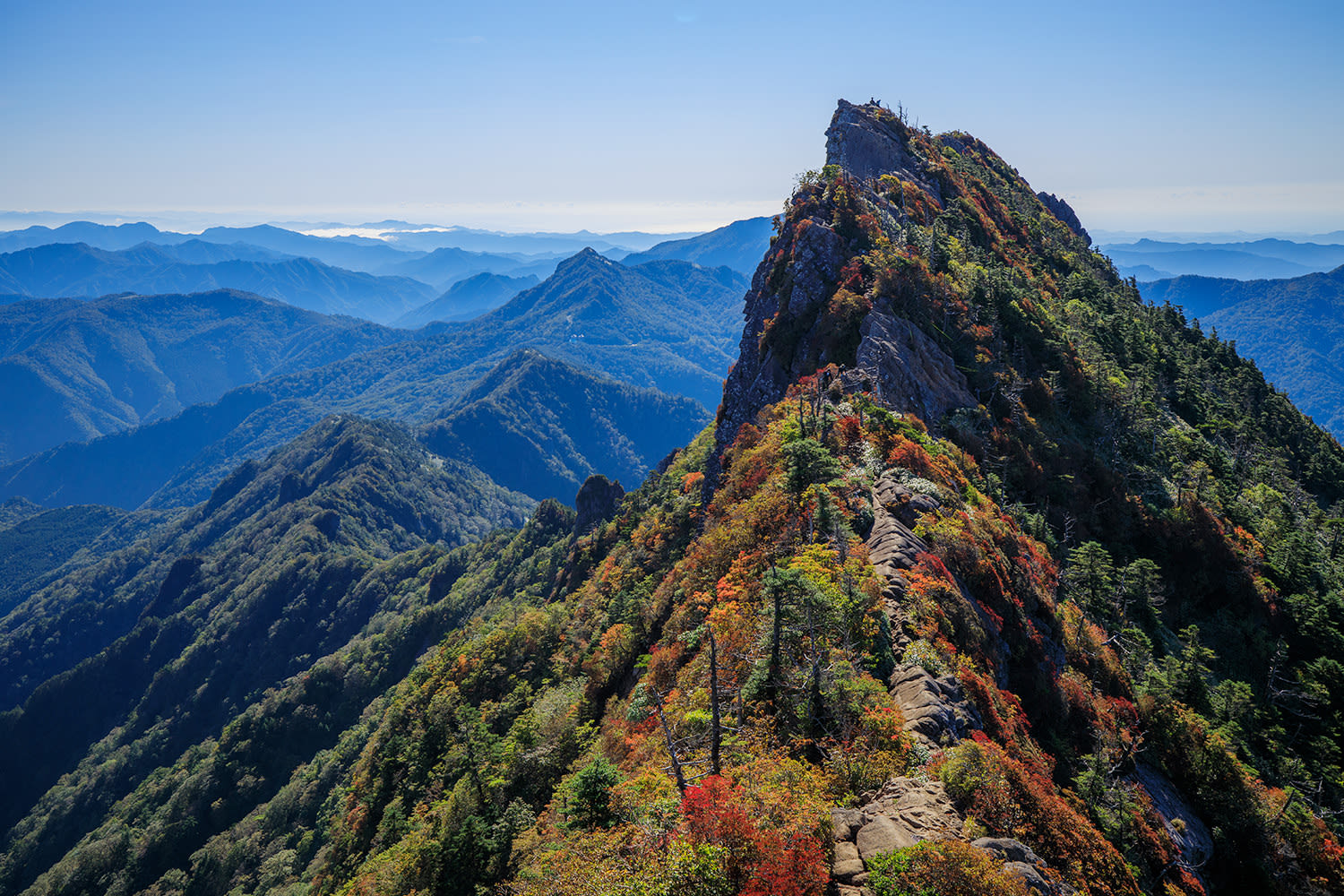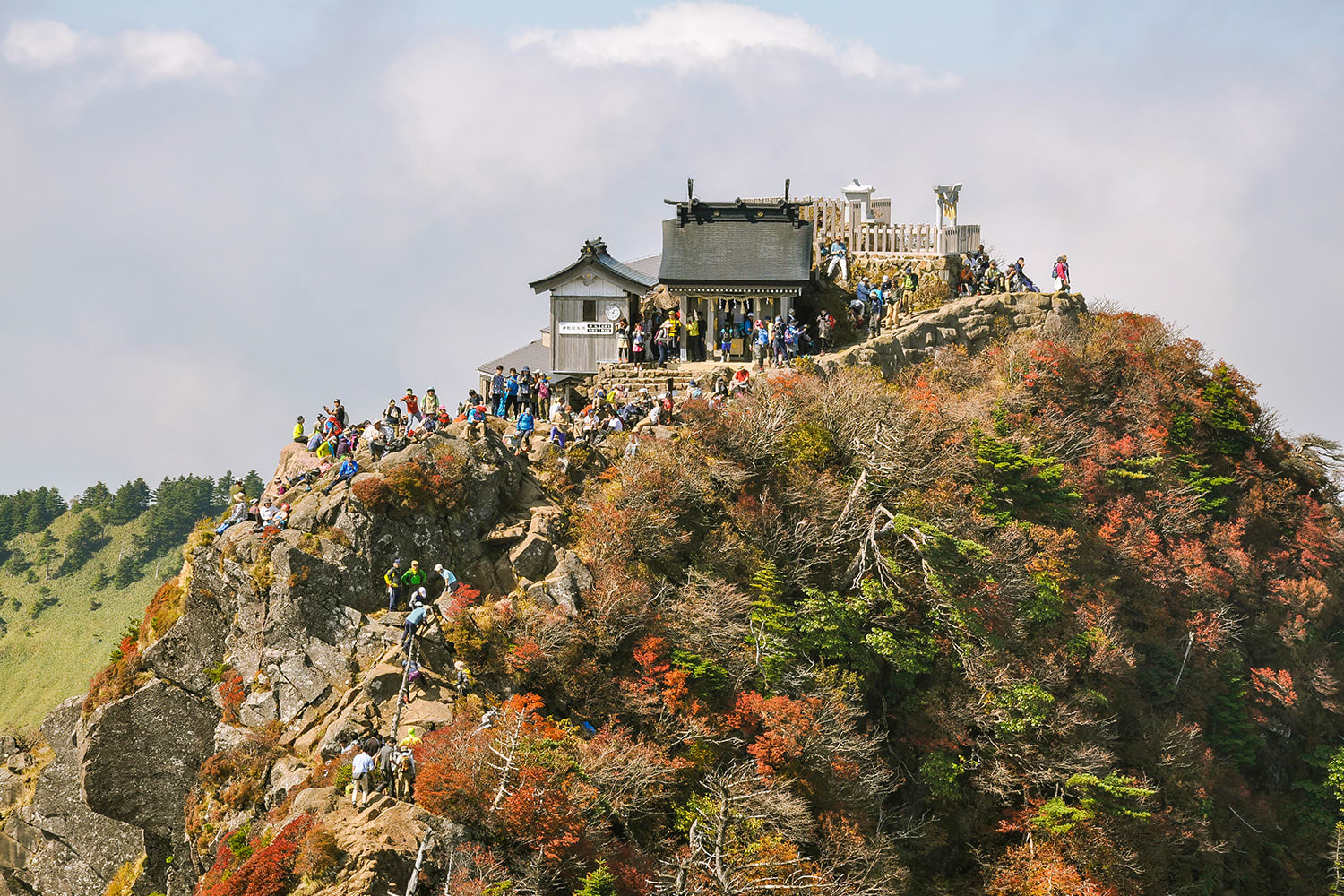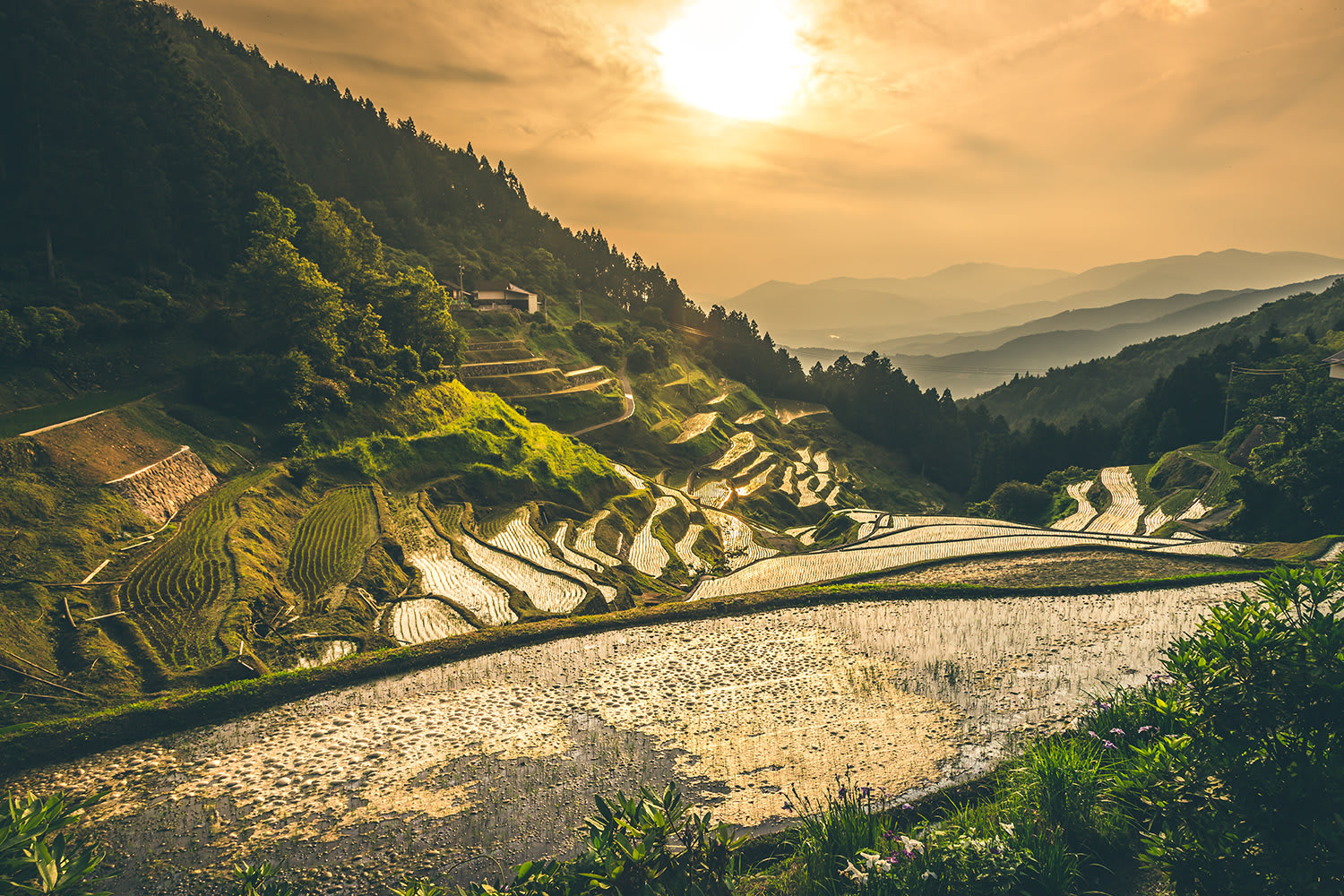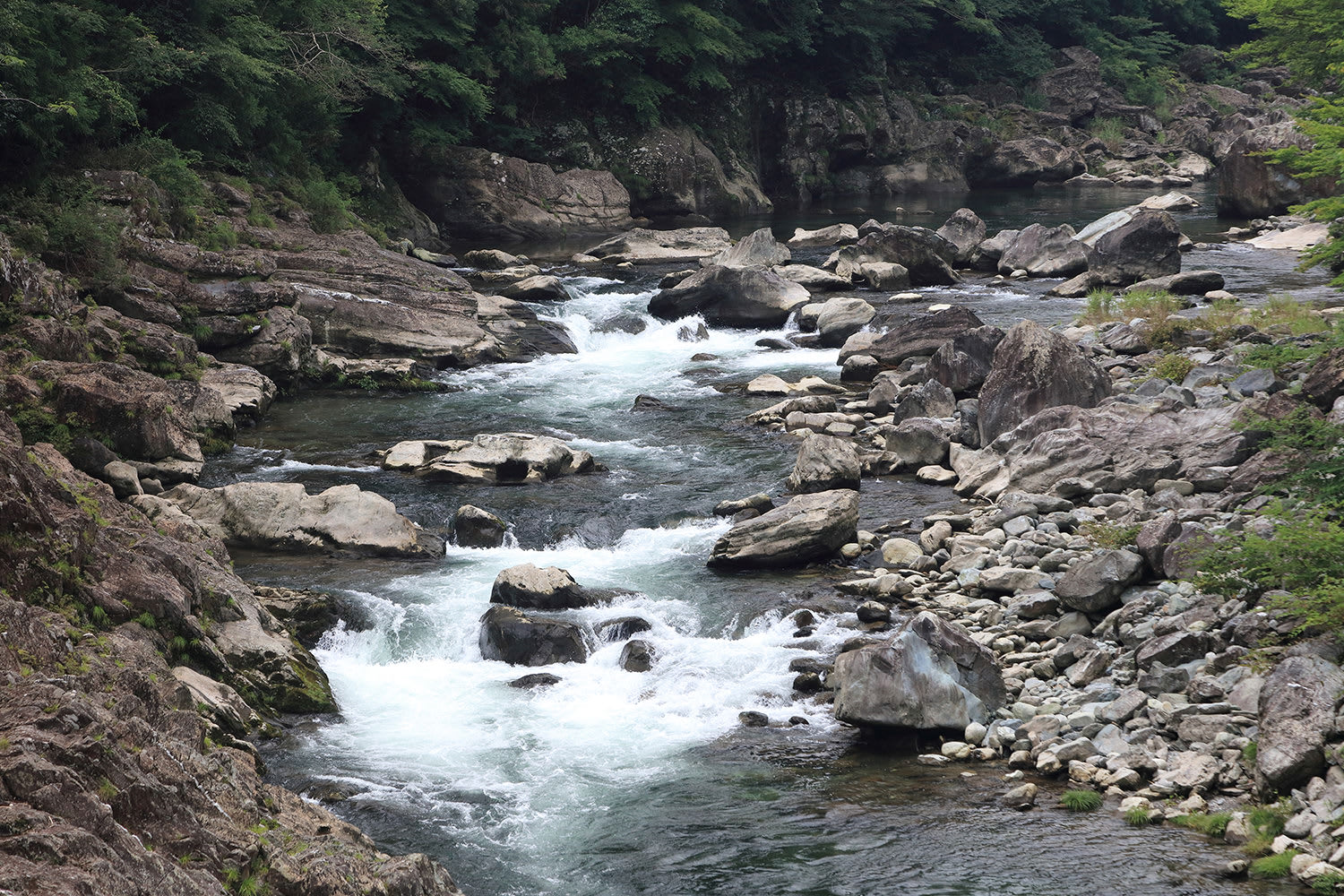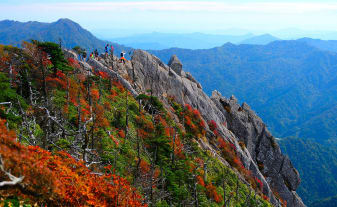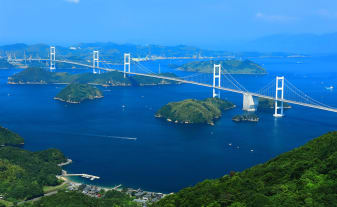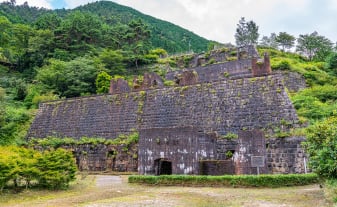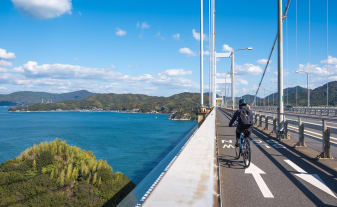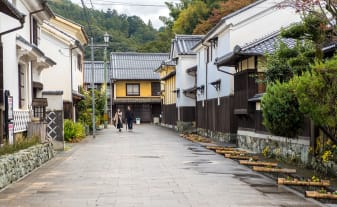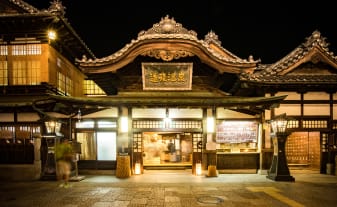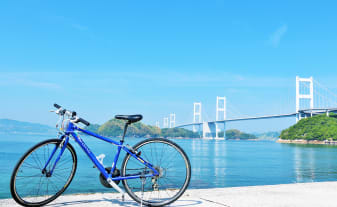 STORIES & GUIDES
STORIES & GUIDES
Experiencing the Stunning Mountain Scenery of Ehime

Ehime is well-known for its coastal landscapes and the Shimanami Kaido cycling route across the Seto Inland Sea, but its mountains and inland areas are equally beautiful, with dramatic scenery and seasonal landscapes: stroll the ridgeline of a mountain blanketed in cherry blossoms in spring, or paddle in the crystal clear headwaters of one of Shikoku’s most beautiful rivers come summer. From autumn hikes on sacred peaks to e-bike tours of Karst highlands, there are many memorable ways to experience Ehime beyond its coastline.
-
Iconic peaks and panoramic views
Mt. Ishizuchi (1,982 m) is western Japan’s highest mountain and one of Shikoku’s most famous. It is a sacred peak, worshiped since ancient times as an abode of kami (deities).
Hike the mountain to connect with the region’s culture and get some of the best views of Ehime and the wider Shikoku region. One of the most popular summit hikes begins from the Chugu Joju-sha precincts of Ishizuchi-jinja Shrine, mid-way up the mountain. A ropeway runs from the foothills to Sancho Joju-eki Station (1,300 m) near the shrine, offering fantastic views of the Ishizuchi Mountain Range on the way. It takes approximately 3.5 hours to reach the summit, navigating steep stairs and rocky slopes. The effort is worth it for the panoramas of the Shikoku landscape and the Ishizuchi Mountain Range’s precipitous contours.
The Ishizuchi Mountain Range includes many other iconic peaks with scenic hikes of varying levels of difficulty. Mt. Kamegamori (1,897 m) has meadows of broad-leaf bamboo near its summit and snag forests of dead trees with bleached white trunks. For especially scenic ridgeline trails, consider hiking Mt. Iyo-Fuji (1,756 m). -
Colored by the seasons
The first hints of spring arrive in late February when fragrant plum blossoms bloom in shades of vivid pink and white across the mountains and valleys of Ehime. In the hills above Uwajima, a grove of plum blossoms in Maruyama Park colors the hillside.
Cherry blossoms follow the plum blooms, opening in soft pink clouds around late March. Some 3,000 cherry trees line the mountain trails of Mt. Sekizen on Iwaki Island, and frame views of the Seto Inland Sea. The blossoms follow the ridgeline of the mountain, creating a pink path to the sea. On the outskirts of the town of Uchiko, the Izumidani Terraced Rice Fields are flooded with water ahead of the planting season, and reflect the changing colors of the sky like natural mirrors.
Ehime’s mountains and valleys offer a welcome respite from humid summer weather. The cool waters of the Kurokawa River running through Odamiyama Gorge invite refreshing dips under a canopy of greenery. Fresh breezes play over meadows of alpine flowers that bloom across the highlands of Shikoku Karst in southern Ehime.
As the days grow cooler, autumn brings red, orange, and gold to all corners of Ehime. The rice fields turn soft gold in the afternoon light as harvest time draws near, and the upper reaches of Mt. Ishizuchi are colored red with vivid maples from October. -
Riverside walks and scenic inland road trips
Many of Ehime’s rivers originate in the Ishizuchi Mountain Range. The headwaters often run through steep-walled gorges eroded over many millennia. Ehime’s rivers offer excellent locations for scenic walks and unforgettable photographs. Get off the beaten track and take a road trip through the prefecture’s inland valleys to discover remote locations of unrivaled natural beauty.
The town of Kumakogen is a convenient base for exploring the waterways of the prefecture. Following the Omogo River upstream through the periphery of the town leads to Omogo-kei Gorge, where there are walking routes through narrow ravines and past waterfalls and intriguing rock formations. One of its most photographed locations is Horaikei, where water flows over and between rocks worn smooth by the river, creating a series of small waterfalls. The emerald-green water contrasts with the whitish-gray of the rocks and the vibrant colors of the surrounding vegetation.
Driving south following the Takanomoto River towards Kochi Prefecture takes you into the highlands of Shikoku Karst. You can travel the highland roads by car, or alight and go for a walk or rent an e-bike for a slower exploration of the limestone-dotted landscape. Venture around the grasslands of Tengu Kogen on the eastern side of Shikoku Karst and discover copses of white birch and red pine. At Keyakidaira, you can stroll through an old-growth forest of zelkova and Japanese horse chestnut. -
Splashing and sliding, the best canyoning destinations
Ehime’s rivers provide ample opportunity for adventure, through canyoning, an exhilarating sport that involves wading, swimming, sliding, and climbing to navigate downstream through a river gorge.
Nametoko Gorge, in the mountains east of Uwajima, is one of Japan’s leading canyoning destinations. Local tour operators offer full- and half-day canyoning excursions. Depending on the tour and your level of experience, you may get to swing from a rope into the base of a small waterfall or form a human chain to slide down a natural chute of granite.
Omogo-kei Gorge offers more relaxed canyoning experiences. The change in elevation through the gorge is smaller, allowing canyoners to take in the surrounding rock formations and waters at a more leisurely pace. The slow flow of the water and shallow pools that form between the wide smooth rocks make it ideal for families and anyone new to the sport.
-
Walking & Hiking
-
Family Friendly
-
Shrines
-
Shopping
-
Camping & Glamping
-
Traditional Crafts
-
Winter
-
Old Townscapes
-
Sustainabilty & Conservation
Related Articles
Central Ehime (Chuyo)
Explore imposing hilltop castles, iconic bath houses, vermillion shrines, otherworldly karst formations, and the tallest mountain in western Japan.